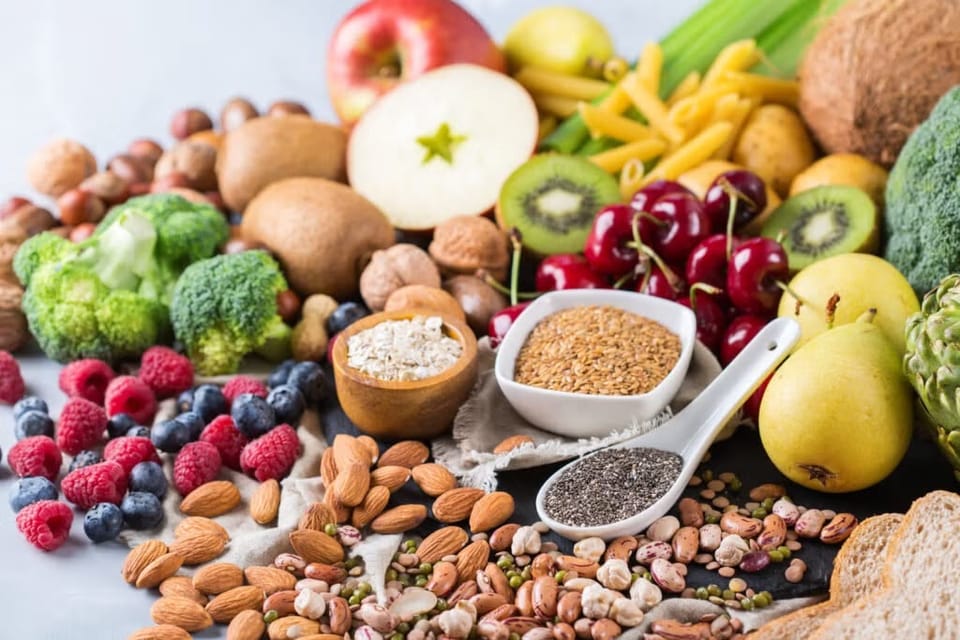Fiber: The Unsung Hero You’re Probably Ignoring

Understanding the Role of Fiber in Dieting
Let’s be honest, fiber isn’t the flashiest topic in the world of nutrition. It doesn’t have a cult following like protein, and it doesn’t get trendy like keto or intermittent fasting. But if you’re trying to lose weight, feel better, or just... go to the bathroom like a regular human being, fiber deserves your attention.
Fiber is one of the most underrated tools in your dieting toolkit.
It supports weight loss, improves gut health, and keeps your blood sugar in check. It also feeds the good bacteria in your gut, your inner ecosystem that affects everything from your mood to your immune system.
Let’s unpack what fiber is, why it’s so powerful, and how to make it a bigger (but not overwhelming) part of your day.
What Exactly Is Fiber?
Fiber is a type of carbohydrate, but unlike most carbs, your body can’t fully digest it. That’s a good thing. Instead of breaking down into sugar, fiber passes through your system, helping regulate digestion, blood sugar, and even your appetite.
There are two types of fiber:
- Soluble fiber dissolves in water and turns into a gel-like substance in your gut. It slows digestion, helps you feel full longer, and keeps blood sugar stable.
- Insoluble fiber adds bulk to your stool and helps things move along. Great for keeping you regular.
Most plant foods have a mix of both.
How Fiber Helps With Weight Loss
Here’s the magic: fiber fills you up without adding extra calories.
It slows down how quickly your stomach empties, which means you feel full for longer. That can naturally help reduce how much you eat.
Fiber also lowers the glycemic load of your meals.
This helps prevent blood sugar spikes, which are often followed by crashes (and cravings).
And there’s more. Fiber binds to some fat and calories in the digestive tract, which can prevent your body from absorbing them. Over time, this can support a calorie deficit without feeling like you're constantly restricting yourself.
The Gut Microbiome Connection
Your gut is home to trillions of bacteria, some helpful, some not so much.
Fiber acts as prebiotic food for the good bacteria. When they digest fiber, they produce short-chain fatty acids (SCFAs), which reduce inflammation, boost immunity, and even support mental health.
Think of fiber as fertilizer for your gut garden.
Without it, your good bacteria starve.
With it, they thrive, and so do you.
Health Benefits of a High-Fiber Diet
Beyond weight loss and gut health, fiber plays a role in:
- Heart health: Fiber helps lower LDL ("bad") cholesterol.
- Blood sugar control: Especially important for people with diabetes or insulin resistance.
- Digestive health: Prevents constipation, hemorrhoids, and supports regularity.
- Longevity: Studies link high-fiber diets to longer life and lower risk of chronic diseases.
15 Fiber-Rich Foods to Add to Your Diet (per 100g)
Here’s your cheat sheet of high-fiber heroes.
- Chia seeds – 34g
- Flaxseeds – 27g
- Lentils (cooked) – 8g
- Black beans (cooked) – 8.7g
- Chickpeas (cooked) – 7.6g
- Split peas (cooked) – 8.3g
- Green peas (cooked) – 5.7g
- Oats (dry) – 10g
- Avocado – 6.7g
- Raspberries – 6.5g
- Pears (with skin) – 3.1g
- Broccoli (cooked) – 3.3g
- Sweet potato (with skin) – 3g
- Almonds – 12.5g
- Quinoa (cooked) – 2.8g
How Much Fiber Do You Need?
Most people fall way short.
- Men need about 38g per day
- Women need about 25g per day
Yet, the average intake is closer to 12g. So if you're feeling bloated, sluggish, or hungry all the time—fiber might be the missing piece.
How to Increase Fiber Without Upsetting Your Gut
This part is key: go slow.
If you go from 10g to 30g overnight, your gut is going to riot.
Think gas, bloating, discomfort, the opposite of what we want.
Instead, try this gradual week-by-week plan:
- Week 1: Track your current fiber intake. Add 5g more daily.
- Week 2: Add another 5g. Drink more water.
- Week 3-4: Keep increasing slowly until you hit your goal.
- Forever: Keep variety high. Mix soluble and insoluble sources. Rotate foods.
Also: fiber needs water. Without it, things can back up. So aim for 1.5 to 2 liters of water a day, minimum.
Takeaways
Fiber is one of the simplest ways to upgrade your diet.
It helps with weight loss, balances your blood sugar, keeps your digestion happy, and even supports your mood through your gut microbiome.
Your action steps:
- Track your fiber today. Just estimate or use a food app.
- Pick 2 new high-fiber foods to add this week.
- Drink more water to support your gut.
- Keep it gradual—fiber isn’t a race, it’s a rhythm.
Your gut—and the rest of you—will thank you.
Until next time
RD Bert